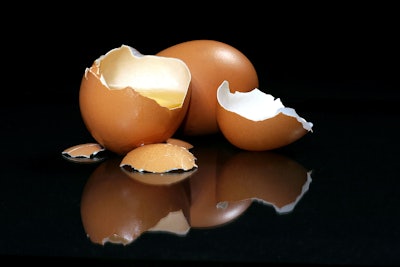
Two or three major Croatian egg producers are likely to close their businesses in the coming weeks.
While retail prices are higher than ever, RTL reports that traders have been reluctant to share price rises with farmers.
At one farm, depopulation of the hens was scheduled for last week, according to a company employee.
Although some companies have been able to negotiate higher prices, these were not sufficient to cover the rapidly rising production costs.
Farm closures and reduced hen populations were confirmed by the national chamber of agriculture. Combined, these could amount to around 5% of Croatian egg production.
European aims to limit feed ingredient price rises
According to the RTL article, prices of wheat and corn (maize) have risen by 200%. Meanwhile, the Russian invasion of Ukraine has also resulted in a 100% increase in sunflower and soybean meals.
Some measures introduced by the European Union offer some relief for livestock and poultry farmers, said the chamber’s president. Among these is an agreement to remove import duties on wheat and other grains entering the region.
More on Croatian egg production
Prior to the current situation, Croatia was generally self-sufficient in eggs.
A senior official at the agriculture ministry told RTL that the government would not allow eggs to become in short supply.
Data from the European Commission put Croatia's laying hen count at around 2.37 million in 2021. Of these, 62% were housed in enriched cages, 34% in barns/aviaries, 4% free-range, and 0.5% in organic production systems.
In 2020, Croatia’s human population numbered around 4.05 million, according to the World Bank.
Following one outbreak of highly pathogenic avian influenza in poultry at the end of last year, a backyard flock tested positive for the virus during January of 2022. The disease situation was recently officially declared “resolved” by the national animal health agency.

















